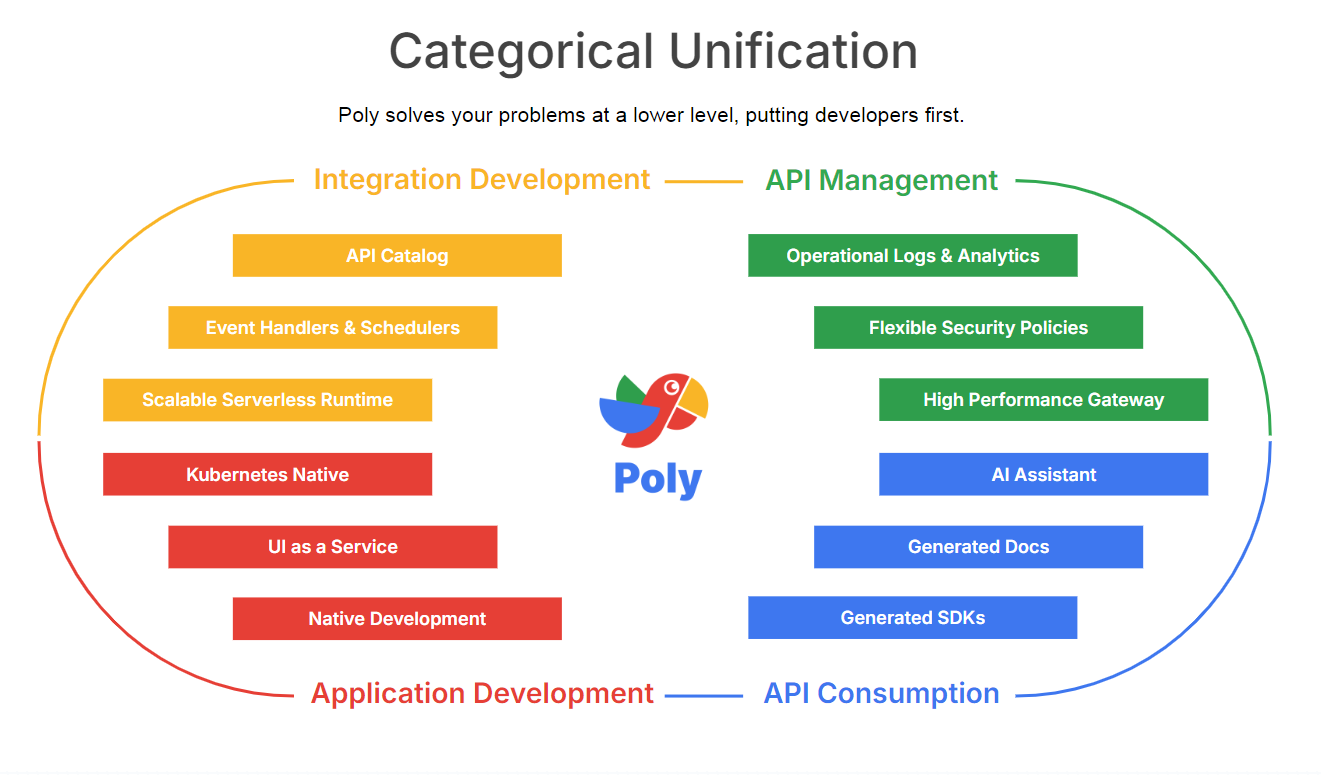Many people view API Gateways as commodities. This thinking stems from the need for more recent innovation in the runtime component and API Management companies’ focus on surrounding features rather than the gateway itself. The common sentiment is that “there’s no money to be made in API Gateways.” This is partly because cloud vendors offer gateways at low costs, and there are numerous open-source alternatives. While I agree that the API Gateway component is a challenging space in which to build a scalable or sustainable business, I disagree that it has become a commodity. I believe API Gateways are on the verge of a renaissance and will soon become a strategic source of innovation and differentiation for middleware platform vendors.
Gateways as Nexuses, Not Commodities
Gateways are evolving into nexuses, serving as critical data points for both runtime traffic and metadata, which higher-order services rely on for intelligence. They act as enforcement points—capable of rerouting, blocking, modifying traffic, and generating metadata in the form of events.
Today, the prevailing view among developers is that API Gateways “don’t do much and are expensive.” In contrast, IT Architects and Leaders see them as essential. I agree with both perspectives. The real opportunity lies in evolving gateways to become more valuable tools for developers and play a far more strategic and integral role in the broader enterprise landscape. They must go beyond key validation, rate limiting, schema validation, and routing. Given the diverse needs of underlying services, I argue that these functions shouldn’t even be part of the gateway’s role—they’ve been included in gateways only due to a lack of better alternatives.
The Future of API Gateways
The future of API Gateways is already taking shape, though it’s far from complete. They will no longer be independent components but embedded services within larger platforms. These platforms will be Kubernetes-native, cloud-agnostic, and enhanced with access to AI services, service implementation source code, and a footprint within clients.
Gateways will be colocated with microservices platforms, eliminating latency impacts for both inbound and outbound service communication. These evolved gateways will handle more than just APIs—they’ll also support HTTPs (for both APIs and websites), Kafka, Cloud Events, Pub/Sub, GraphQL Subscriptions, and more. They will subscribe to events, offer endpoints for invoking microservices, and normalize APIs into a common interface model. In this evolution, they will unify (or cannibalize, depending on how you see it) capabilities traditionally handled by API Gateways, Event Brokers, Ingress Controllers, and Backends-as-a-Service.
Gateways as Intelligent Event Sources
Gateways will become central data streams, offering information on runtime traffic, error events, interface drift, state transitions, and time-based triggers. These streams will feed into analytics, monitoring, and monetization systems, enabling near-real-time insights.
For instance:
- Error streams will power real-time operational and security analysis.
- Interface drift will be detected and flagged, with AI-driven assessments to determine impacts and offer suggestions for remediation.
- Deprecation events and new endpoint introductions will generate real-time, automated release notes personalized for each client’s implementations.
- Time-triggered events will ensure that even non-event-driven systems can be integrated seamlessly.
Gateways will understand event schemas, APIs, and client permissions, enabling real-time, client-specific generation of SDKs, OpenAPI specs, Postman collections, and search/discovery endpoints. The unified APIs offered by gateways will be strongly typed and uniform, simplifying integration tasks.
Key Breakthroughs Enabled by Evolved Gateways
- Programmatic UIs: Configurable enterprise management portals will operate through functions that execute APIs at the gateway layer, potentially inferred or generated by AI agents.
- Pre-Populated Clients: API Consoles will be implicit and will make Postman collections a relic of the past.
- Automated Documentation: OpenAPI specs and corresponding documentation will be programmatically generated at the gateway layer.
- Native SDK Generation: SDKs will be tightly aligned with the gateway interface.
- Credential Management: Gateways will substitute credentials dynamically via vaults, ensuring that sensitive data never touches client or service layers.
- Seamless Ecosystem Collaboration: Gateways will enable faster and simpler collaboration by streamlining partner ecosystems and fostering seamless API interaction. This will reduce complexity in multi-vendor environments and accelerate innovation.
AI and Policy Evolution in Gateways
Gateways will also natively integrate with AI assistants, enabling runtime API discovery, transformation, and orchestration via AI-powered APIs. Policies will no longer reside within the gateway; instead, they’ll be externalized as microservices, allowing vendors, partners, or customers to manage policy orchestration flexibly.
Moreover, gateways will provide essential contextual metrics—like links, alerts, and health statuses—allowing developers to build more reliable, responsive applications. These innovations will ultimately save developers time and improve service quality.
Unified Middleware Platforms Will Lead the Charge
The described capabilities will only be realized within unified enterprise middleware platforms. These platforms will have the resources to develop specialized services and gateways needed to offer mature, integrated solutions. The economic benefits for enterprises will far outweigh the investment required to build these platforms. Independent or partial solutions won’t be able to compete at the same level. While partnerships will help with peripheral services like monitoring or logging, the core gateway flows must reside within a single platform.

We began our journey almost two years ago to realize this vision and are executing it rapidly. This categorical unification of core services is a “unified enterprise development platform.” If you’re interested in this vision or want to learn more, contact hello@polyapi.io. We’d love to hear from you!
